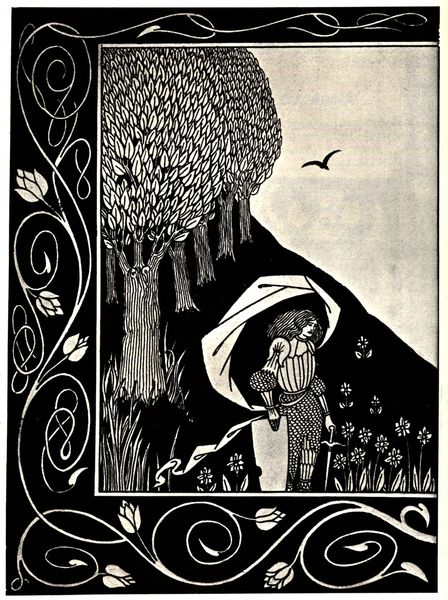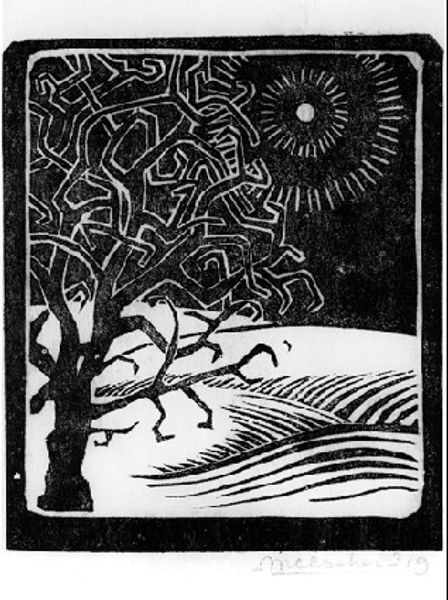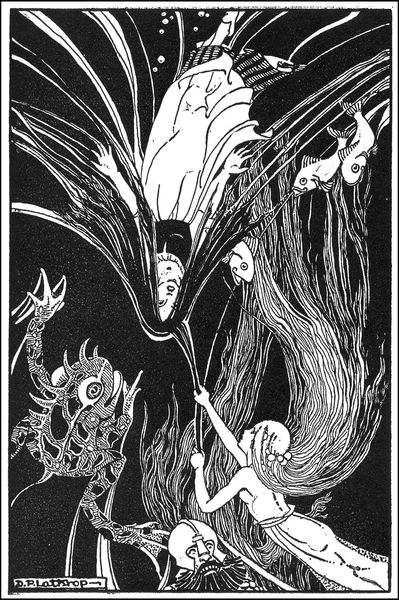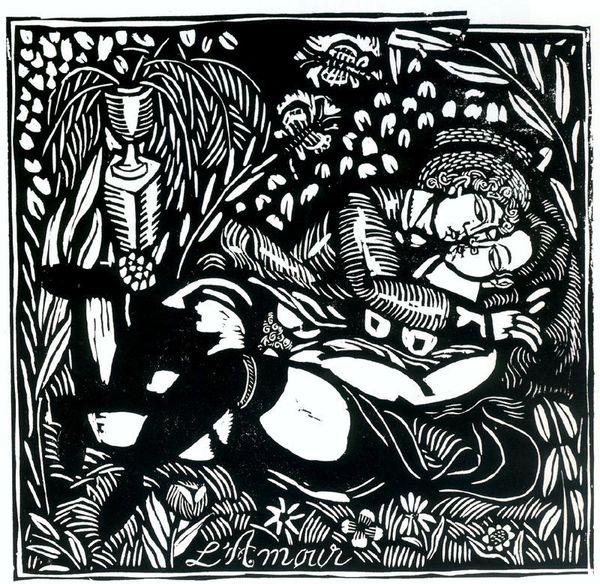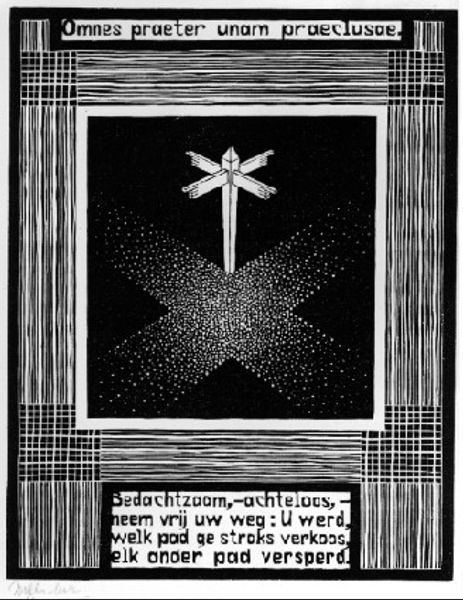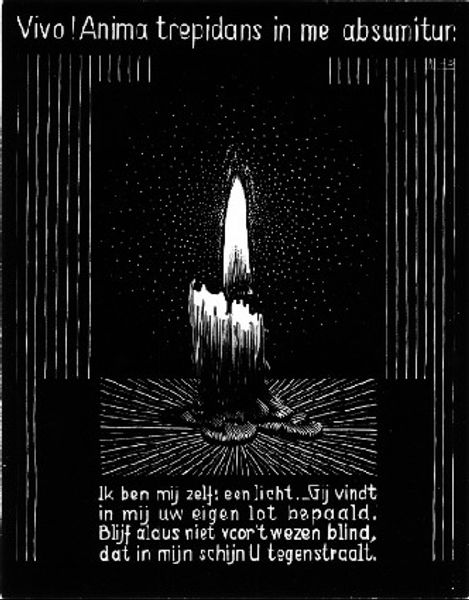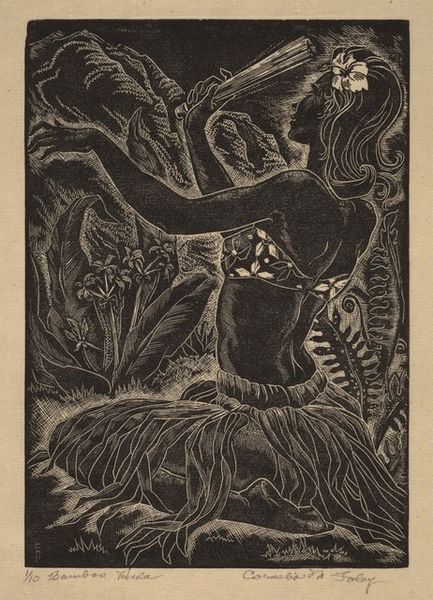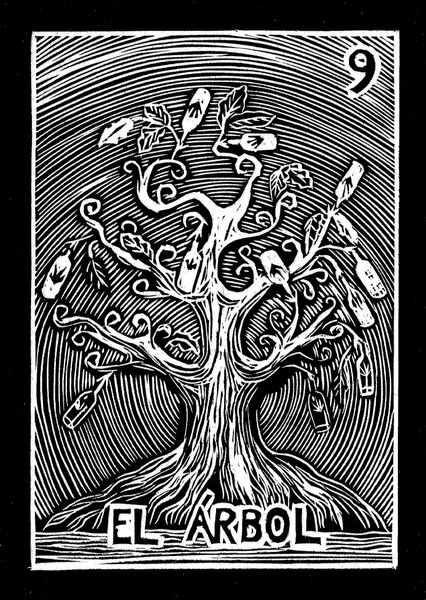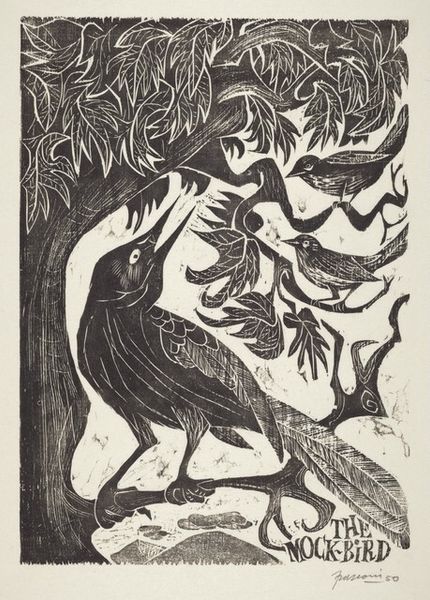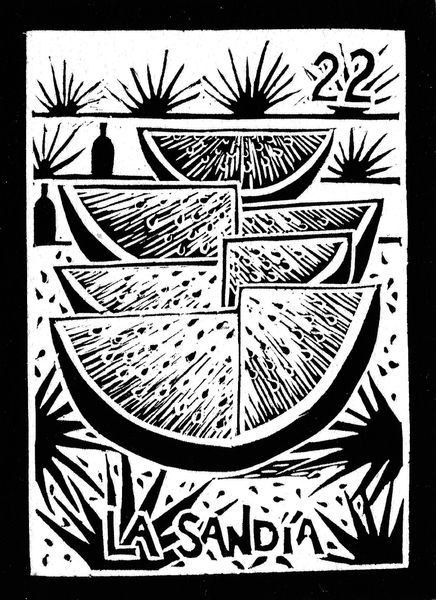
Copyright: M.C. Escher,Fair Use
Editor: Here we have M.C. Escher’s "Emblemata - Butterfly," a woodcut print from 1931. The detail is amazing, isn't it? But what really strikes me is the contrast; how the stark black background makes all of these intricate floral designs and the butterfly really pop out. How do you interpret this work? Curator: Escher’s woodcut isn’t just a pretty picture. Look at the Latin phrase at the top, "Signum immortalitatis fragile admodum," which translates to "A sign of immortality, yet exceedingly fragile." Then the Dutch text at the bottom speaks to the same theme, the interplay between delicacy and a kind of imposed duty. It prompts us to consider how societal structures shape our individual experiences, and often disregard individual experience. The butterfly, often symbolizing transformation and beauty, becomes almost trapped, doesn’t it? Editor: Trapped, yes, but surrounded by beauty nonetheless. Does the medium itself, a woodcut, add to this message? Curator: Absolutely. The woodcut's starkness underscores a visual tension. The act of carving requires removing material to create the image. What are the consequences when voices are being carved out, or pushed to the margins? The piece, then, can be read as a poignant commentary on social fragility and the pressure to conform. Editor: So it is not just a pretty image, but a conversation about our expectations about others? And how they interact? I will never look at a butterfly the same way again! Curator: Precisely. Escher compels us to look beyond the surface and engage with the complexities of the world. By interlacing imagery and language, the piece is designed to create awareness and promote dialogue.
Comments
No comments
Be the first to comment and join the conversation on the ultimate creative platform.
